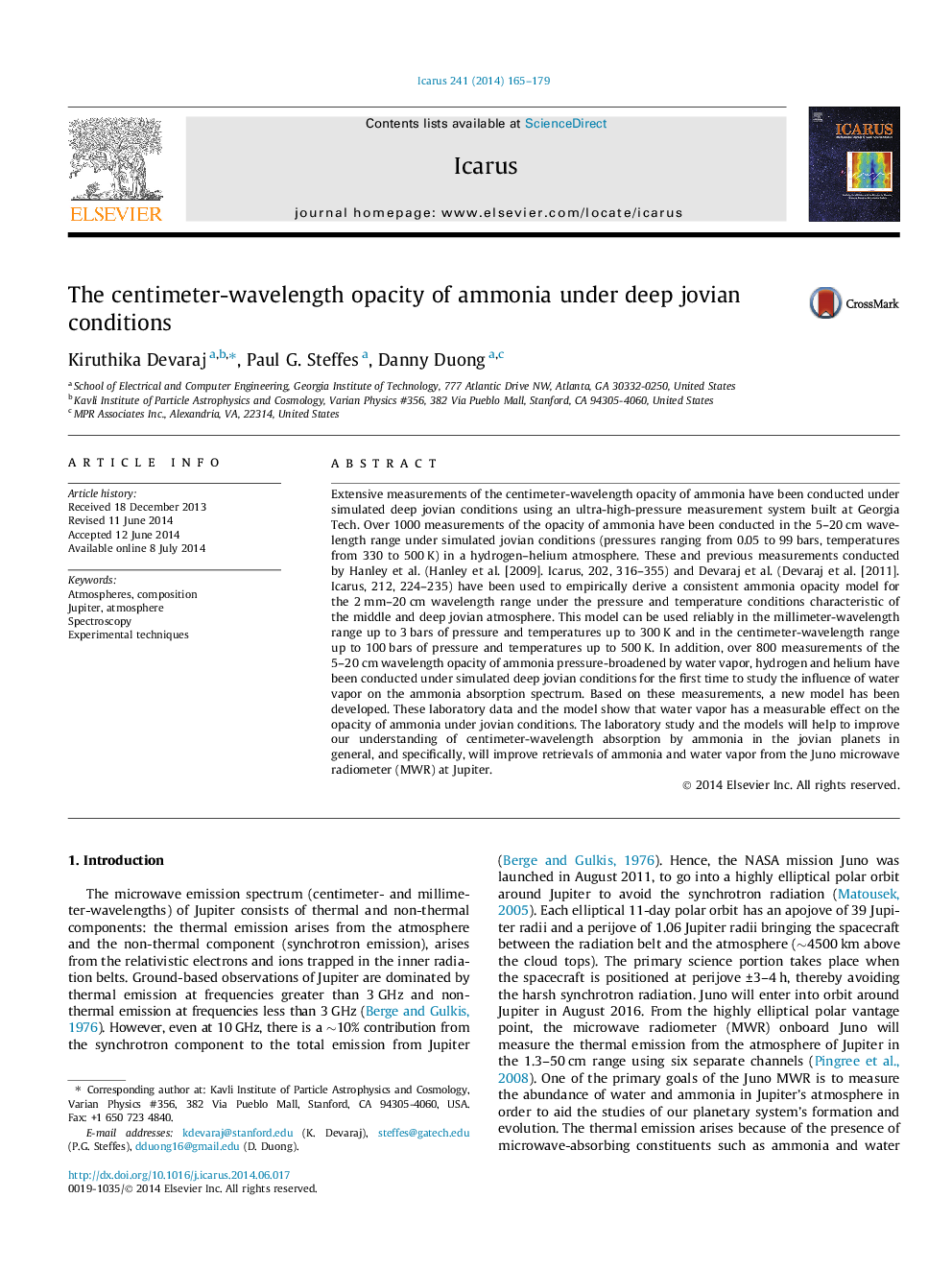| Article ID | Journal | Published Year | Pages | File Type |
|---|---|---|---|---|
| 8137770 | Icarus | 2014 | 15 Pages |
Abstract
Extensive measurements of the centimeter-wavelength opacity of ammonia have been conducted under simulated deep jovian conditions using an ultra-high-pressure measurement system built at Georgia Tech. Over 1000 measurements of the opacity of ammonia have been conducted in the 5-20Â cm wavelength range under simulated jovian conditions (pressures ranging from 0.05 to 99Â bars, temperatures from 330 to 500Â K) in a hydrogen-helium atmosphere. These and previous measurements conducted by Hanley et al. (Hanley et al. [2009]. Icarus, 202, 316-355) and Devaraj et al. (Devaraj et al. [2011]. Icarus, 212, 224-235) have been used to empirically derive a consistent ammonia opacity model for the 2Â mm-20Â cm wavelength range under the pressure and temperature conditions characteristic of the middle and deep jovian atmosphere. This model can be used reliably in the millimeter-wavelength range up to 3Â bars of pressure and temperatures up to 300Â K and in the centimeter-wavelength range up to 100Â bars of pressure and temperatures up to 500Â K. In addition, over 800 measurements of the 5-20Â cm wavelength opacity of ammonia pressure-broadened by water vapor, hydrogen and helium have been conducted under simulated deep jovian conditions for the first time to study the influence of water vapor on the ammonia absorption spectrum. Based on these measurements, a new model has been developed. These laboratory data and the model show that water vapor has a measurable effect on the opacity of ammonia under jovian conditions. The laboratory study and the models will help to improve our understanding of centimeter-wavelength absorption by ammonia in the jovian planets in general, and specifically, will improve retrievals of ammonia and water vapor from the Juno microwave radiometer (MWR) at Jupiter.
Related Topics
Physical Sciences and Engineering
Earth and Planetary Sciences
Space and Planetary Science
Authors
Kiruthika Devaraj, Paul G. Steffes, Danny Duong,
